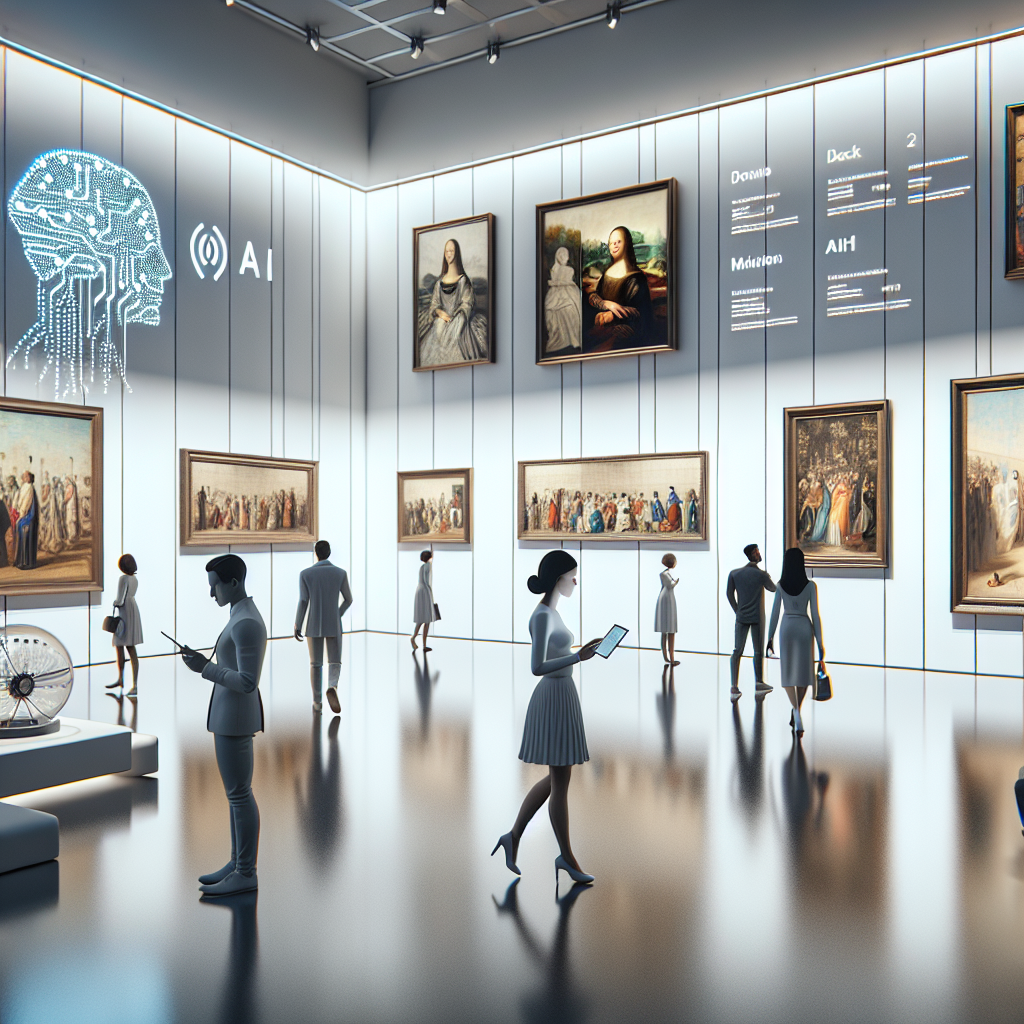Artificial Intelligence (AI) is revolutionizing the way museums curate their collections and enhance visitor experiences. With the help of AI technology, museums are able to analyze vast amounts of data, personalize visitor interactions, and create immersive experiences that engage and educate visitors in new and exciting ways.
AI in museum curation involves the use of machine learning algorithms to analyze and categorize artworks, artifacts, and historical objects. This technology can help museums identify patterns and trends in their collections, make connections between different pieces, and uncover hidden insights that can enrich the visitor experience.
One of the key benefits of using AI in museum curation is the ability to personalize visitor experiences. By analyzing visitor data, AI systems can recommend specific artworks or exhibits based on a visitor’s interests and preferences. This can help museums tailor their exhibits to individual visitors, making the experience more engaging and memorable.
In addition, AI can also be used to create interactive experiences that engage visitors in new and innovative ways. For example, AI-powered chatbots can provide visitors with information about artworks, answer questions, and even engage in conversations about art history and culture. Virtual reality and augmented reality technologies can also be used to create immersive experiences that allow visitors to explore artworks and artifacts in new and exciting ways.
AI can also help museums make their collections more accessible to a wider audience. By digitizing their collections and using AI to curate online exhibits, museums can reach a global audience and engage with visitors who may not be able to visit in person. This can help museums broaden their reach and attract new audiences who may not have had the opportunity to experience their collections otherwise.
Overall, AI is transforming the way museums curate their collections and engage with visitors. By harnessing the power of AI technology, museums can create more personalized, interactive, and accessible experiences that enrich the visitor experience and help to preserve and promote cultural heritage for future generations.
FAQs:
1. What is AI in museum curation?
AI in museum curation involves the use of artificial intelligence technology to analyze and categorize artworks, artifacts, and historical objects. This technology can help museums identify patterns and trends in their collections, personalize visitor interactions, and create immersive experiences that engage and educate visitors in new and exciting ways.
2. How does AI personalize visitor experiences in museums?
AI can personalize visitor experiences in museums by analyzing visitor data and recommending specific artworks or exhibits based on a visitor’s interests and preferences. This can help museums tailor their exhibits to individual visitors, making the experience more engaging and memorable.
3. How does AI make museum collections more accessible?
AI can make museum collections more accessible by digitizing their collections and using AI to curate online exhibits. This can help museums reach a global audience and engage with visitors who may not be able to visit in person, broadening their reach and attracting new audiences.
4. What are some examples of AI-powered experiences in museums?
Some examples of AI-powered experiences in museums include chatbots that provide visitors with information about artworks, virtual reality and augmented reality experiences that allow visitors to explore artworks in new ways, and personalized recommendations based on visitor data.
5. How is AI transforming the museum industry?
AI is transforming the museum industry by helping museums curate their collections more effectively, personalize visitor experiences, and make their collections more accessible to a wider audience. This technology is revolutionizing the way museums engage with visitors and preserve and promote cultural heritage for future generations.

